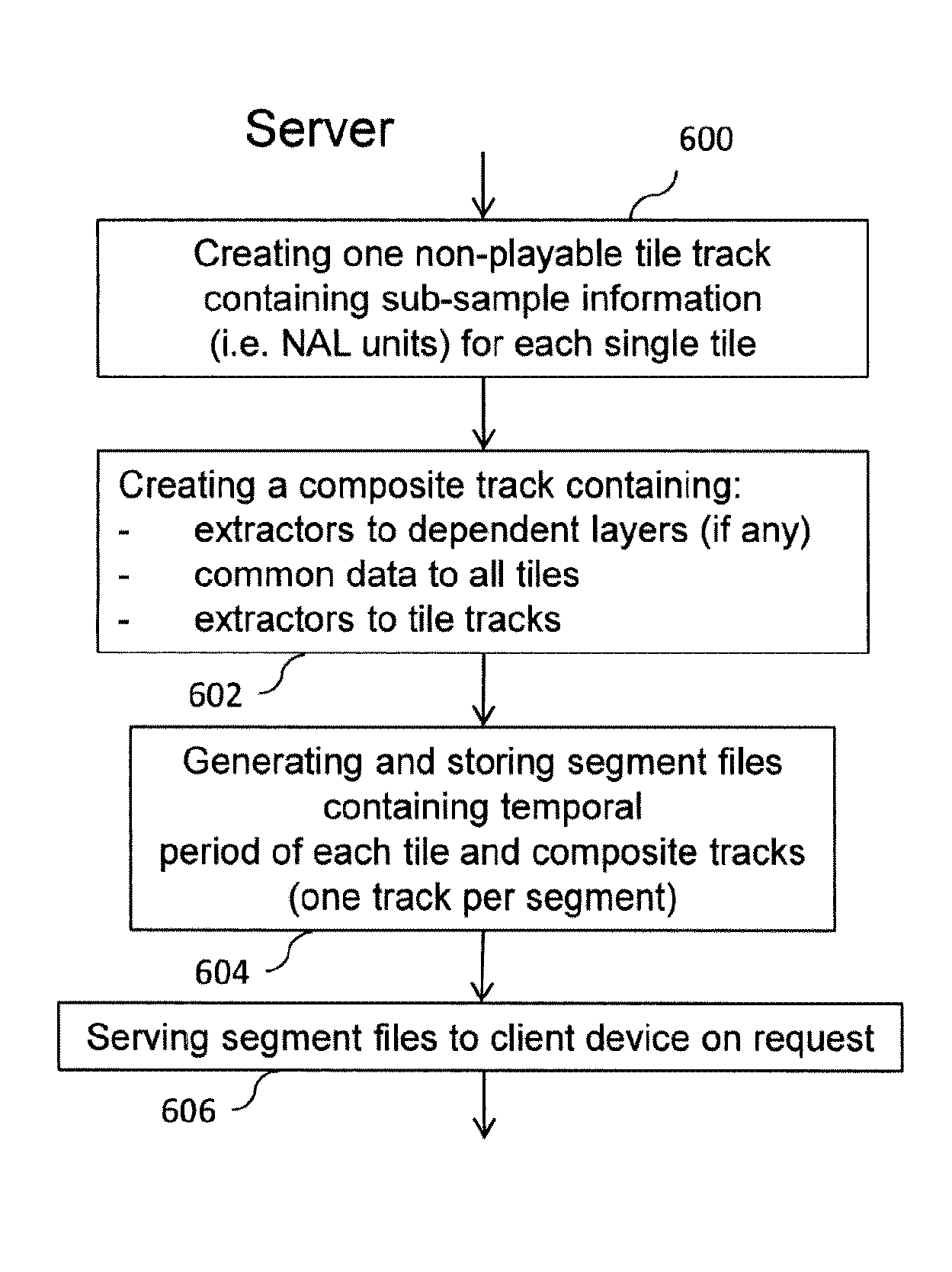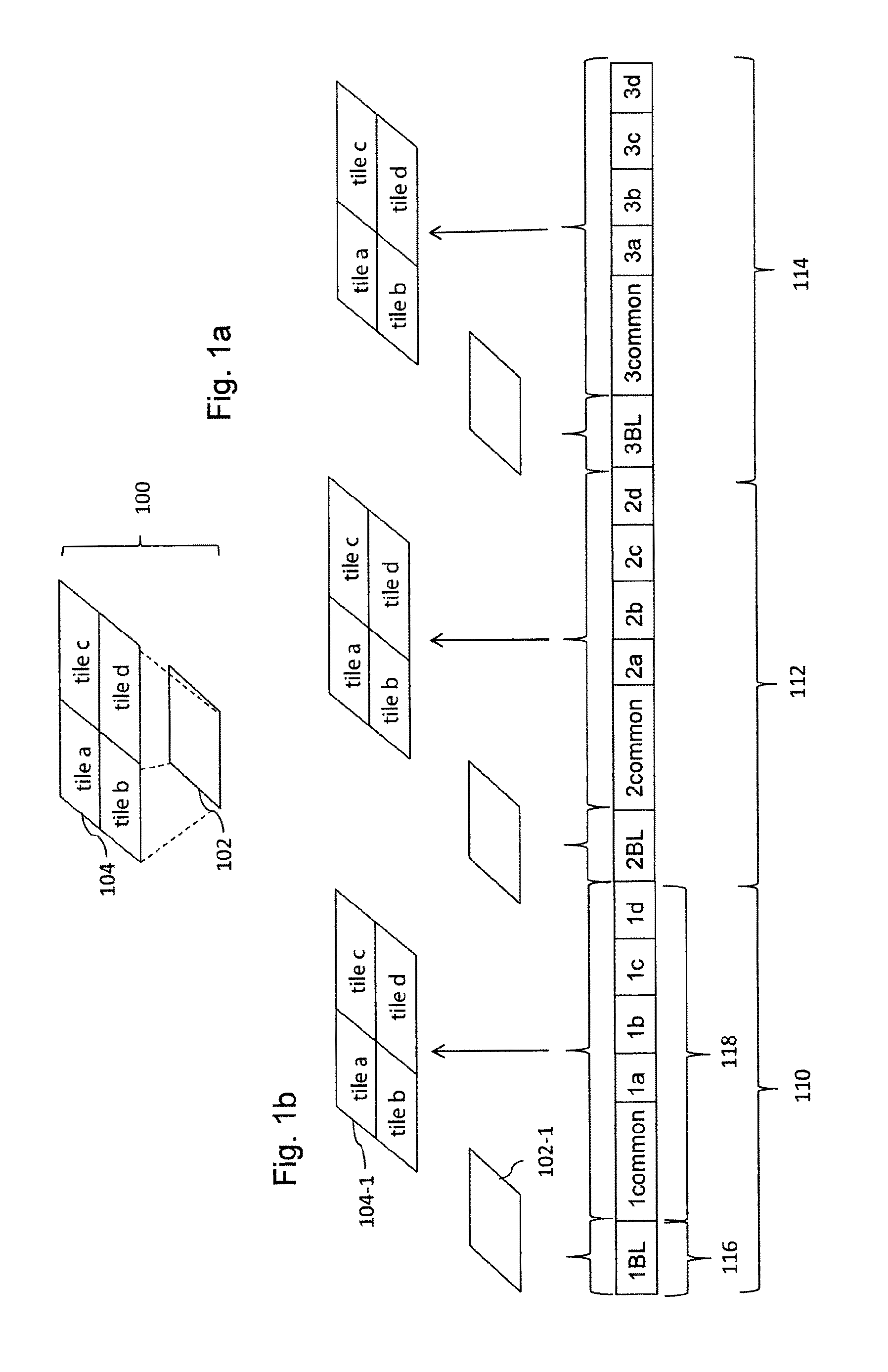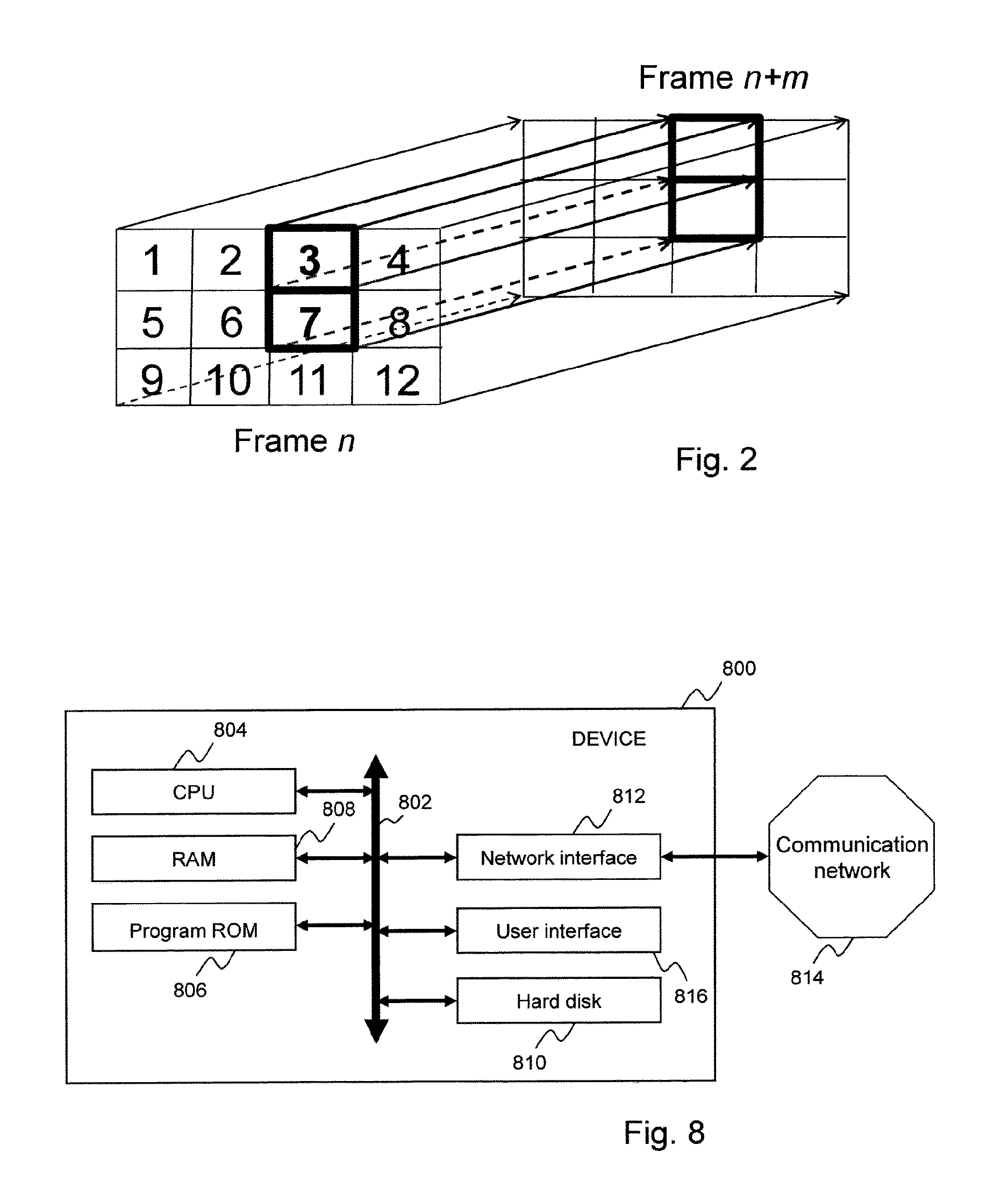Method, device, and computer program for encapsulating partitioned timed media data
a timed media and data encapsulation technology, applied in the field of encapsulation of timed media data, can solve the problems of not all receiving and video decoding devices having resources, and none of these strategies allowing efficient access to specific tiles in the context of http streaming, so as to reduce indexation overhead and efficient streaming of independent portions
- Summary
- Abstract
- Description
- Claims
- Application Information
AI Technical Summary
Benefits of technology
Problems solved by technology
Method used
Image
Examples
Embodiment Construction
[0160]According to a particular embodiment, partitioned timed media data such as tiled timed media data (e.g. video data) comprising timed samples (e.g. images) are transmitted as a set of several timed media data tracks, typically a base layer track and several tile tracks, and a reference or composite track that comprises references to timed media data tracks. Each tile track comprises one spatial subsample (e.g. several NAL units) of several timed samples. An extended extractor type is defined for referencing timed media data tracks from a composite track. Timed media data tracks are labeled as not displayable and convey and describe timed media data for tiles. Such a set of timed media data tracks and a composite track allows the selecting, composing, and efficient streaming of spatial video tiles. Each track can be transmitted from a server device to a client device as a set of media segment files. An initialization segment file can be used to transmit metadata required to deco...
PUM
 Login to View More
Login to View More Abstract
Description
Claims
Application Information
 Login to View More
Login to View More - R&D
- Intellectual Property
- Life Sciences
- Materials
- Tech Scout
- Unparalleled Data Quality
- Higher Quality Content
- 60% Fewer Hallucinations
Browse by: Latest US Patents, China's latest patents, Technical Efficacy Thesaurus, Application Domain, Technology Topic, Popular Technical Reports.
© 2025 PatSnap. All rights reserved.Legal|Privacy policy|Modern Slavery Act Transparency Statement|Sitemap|About US| Contact US: help@patsnap.com



